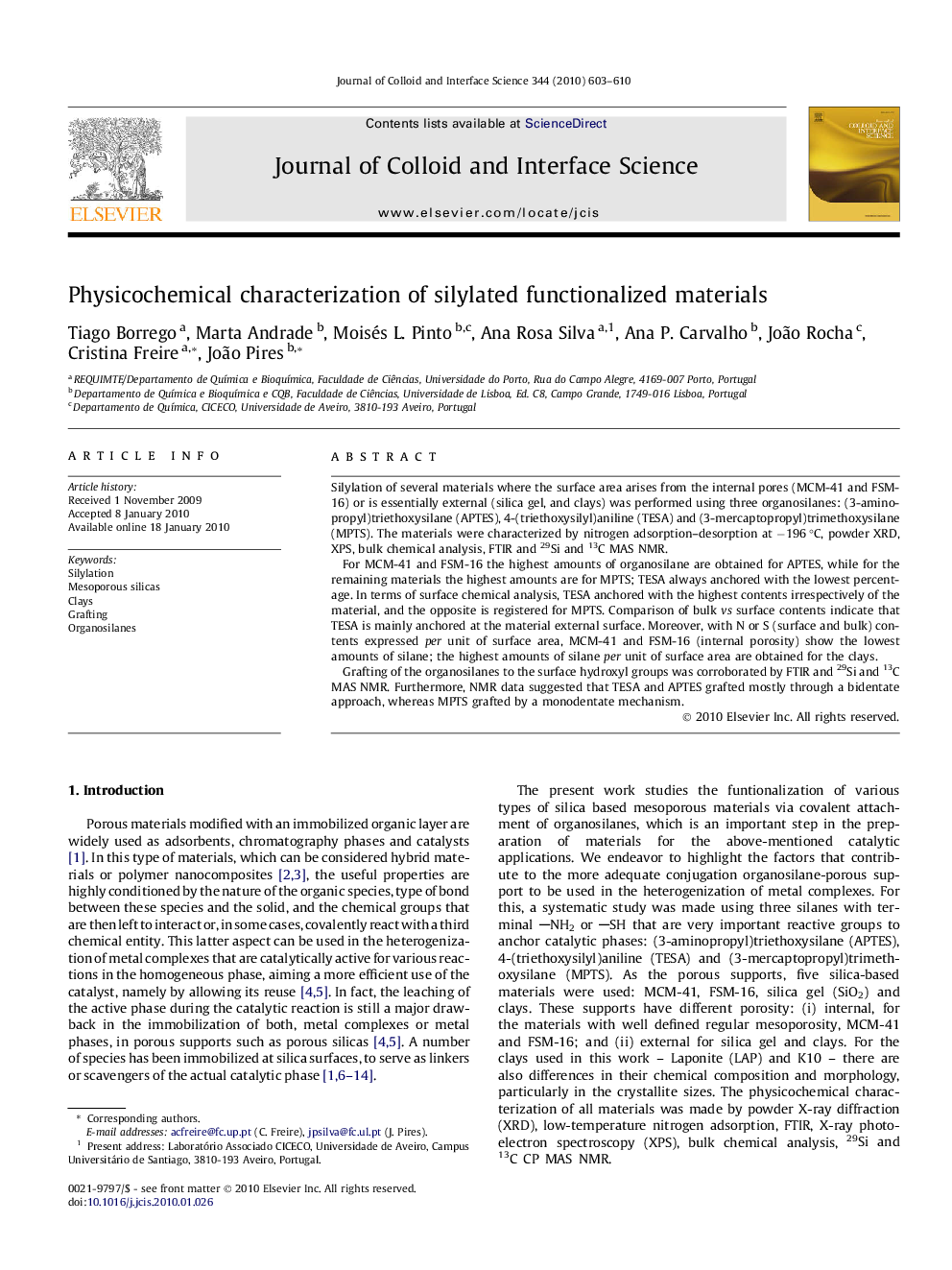| Article ID | Journal | Published Year | Pages | File Type |
|---|---|---|---|---|
| 609735 | Journal of Colloid and Interface Science | 2010 | 8 Pages |
Silylation of several materials where the surface area arises from the internal pores (MCM-41 and FSM-16) or is essentially external (silica gel, and clays) was performed using three organosilanes: (3-aminopropyl)triethoxysilane (APTES), 4-(triethoxysilyl)aniline (TESA) and (3-mercaptopropyl)trimethoxysilane (MPTS). The materials were characterized by nitrogen adsorption–desorption at −196 °C, powder XRD, XPS, bulk chemical analysis, FTIR and 29Si and 13C MAS NMR.For MCM-41 and FSM-16 the highest amounts of organosilane are obtained for APTES, while for the remaining materials the highest amounts are for MPTS; TESA always anchored with the lowest percentage. In terms of surface chemical analysis, TESA anchored with the highest contents irrespectively of the material, and the opposite is registered for MPTS. Comparison of bulk vs surface contents indicate that TESA is mainly anchored at the material external surface. Moreover, with N or S (surface and bulk) contents expressed per unit of surface area, MCM-41 and FSM-16 (internal porosity) show the lowest amounts of silane; the highest amounts of silane per unit of surface area are obtained for the clays.Grafting of the organosilanes to the surface hydroxyl groups was corroborated by FTIR and 29Si and 13C MAS NMR. Furthermore, NMR data suggested that TESA and APTES grafted mostly through a bidentate approach, whereas MPTS grafted by a monodentate mechanism.
Graphical abstractMaterials with different pore structures – internal versus external porosity – were successfully functionalized with amino (APTES and TESA) and mercapto (MPTS) organosilanes.Figure optionsDownload full-size imageDownload high-quality image (89 K)Download as PowerPoint slide
